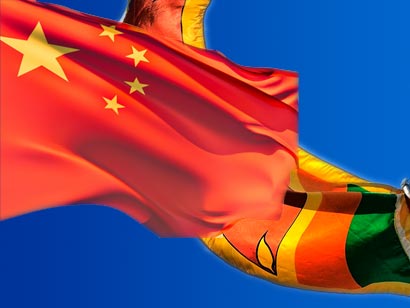New Chinese loan may further plunge Sri Lanka into debt trap

NEW DELHI: India’s southern neighbour Sri Lanka may plunge further into the Chinese debt trap with Colombo yet again turning to Beijing for fresh loans, which will come during the final quarter of 2018.
The Central Bank of Sri Lanka is working with its Chinese counterpart, People’s Bank of China, to issue the equivalent of $250 million worth of yuan-denominated Panda bonds, ET has learnt.
China is already the largest lender to the island nation. Sri Lanka retains fondness for Chinese loans — rather than international sovereign bonds — despite high rate of interest.
Sri Lanka recently secured a $1 billion syndicated loan from China Development Bank. But the $1.25 billion in loans will push Sri Lanka closer to China. Lankan foreign reserves are now at $8.5 billion and inadequate, according to analysts who study Lankan economy.
Colombo’s accumulated foreign debt is estimated at $55 billion. Between 2019 and 2023, Colombo has to garner $17 billion for foreign loans maturing and debt servicing. Its lenders include the China Development Bank, the governments of Japan and India as well as multilateral institutions like the World Bank and Asian Development Bank. Indian and Japanese loans have a much lower interest rate.
China charges an interest rate of 6.3% for its loans to Lanka, while the interest rates on soft loans from the World Bank and the Asian Development Bank (ADB) are only 0.25–3%. Interest rates of India’s Line of Credit to the neighbouring countries are as low as 1%, or even less in some cases
The country’s debt is 77% of its GDP. This is higher than the debt-to-GDP ratio of India, Pakistan, Malaysia and Thailand.
Last year $1.1 billion in debt was written off by China in exchange for a long-term lease on the deep-water port of Hambantota. Chinese loans worth $1.5 billion were used to build the port, the lease to which is held by a state-owned Chinese company.
During his presidential term Mahinda Rajapaksa opened the door to Chinese lenders. From 2010 till 2015, when Rajapaksa was in power, Chinese pumped in $4.8 billion worth of loans into building the Hambantota port, a new airport, a coal-fired power plant and highways. By 2016, China had extended $6 billion in loans to Sri Lanka.
Debts are turning into equity and finally ownership for Chinese firms that will not only adversely impact Sri Lankan and Pakistani economies but also create security implications for Delhi due to China’s widening presence in India’s periphery. This has major lessons for Bangladesh and Nepal where China has assured to invest billions.
(India Times)
Latest Headlines in Sri Lanka
- Sri Lanka President orders accurate data and fast disaster recovery in Matale December 7, 2025
- India sends Bailey Bridge parts to Sri Lanka to rebuild damaged bridges December 7, 2025
- Lanka Ashok Leyland donates vehicles worth Rs. 65 Million to support Sri Lanka’s disaster response December 6, 2025
- Sri Lanka President orders unified drive to speed up disaster recovery December 6, 2025
- Sri Lanka extends income tax return deadline due to Cyclone Ditwah December 6, 2025


